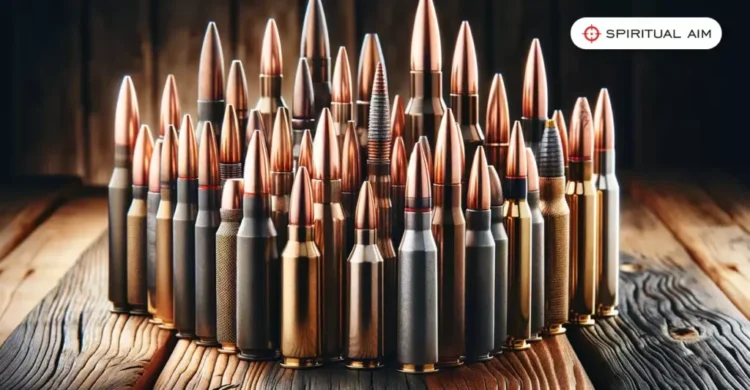Bullet symbolism is a captivating and multifaceted subject that transcends its literal representation. Often associated with violence, warfare, and danger, bullets carry a weighty symbolism that extends into various aspects of human existence. However, beneath the surface of this seemingly straightforward symbol lies a rich tapestry of meanings that touch on themes ranging from power and conflict to social commentary and personal struggles.
The Literal Connotation:
At its most basic level, a bullet is a small, metallic projectile fired from a firearm. In the realm of literal interpretation, bullets signify force, destruction, and the potential for fatal consequences. This direct and concrete representation has been a staple in art, literature, and popular culture, where bullets are often employed to convey the intensity of conflict and the harsh realities of war.
War and Conflict:
One of the most prevalent contexts for bullet symbolism is the association with war and conflict. Bullets become emblematic of the brutality and inhumanity of armed confrontations, serving as a stark reminder of the devastating impact of violence on both individuals and societies. In war literature, films, and visual arts, bullets are frequently utilized to underscore the trauma and loss experienced by those caught in the crossfire.
Power and Control:
Beyond their role in warfare, bullets symbolize power and control. The ability to wield firearms and ammunition has historically been linked to authority and dominance. Bullets, as instruments of force, highlight the asymmetry of power in various social, political, and economic contexts. The possession of bullets can signify not only physical strength but also the capacity to influence and manipulate others, making it a potent symbol in discussions of power dynamics.
Social Commentary:
Bullet symbolism extends into social commentary, acting as a metaphor for the challenges and conflicts within societies. Artists and writers often use bullets to critique issues such as inequality, injustice, and the abuse of power. In this context, bullets become a visual and literary device to highlight the fractures and tensions that exist within communities, serving as a call to action or a plea for change.
Personal Struggles and Resilience:
On a more personal level, bullet symbolism can be a reflection of individual struggles and resilience. Metaphorically, life’s challenges are often compared to bullets, representing the difficulties and obstacles that individuals face. However, the resilience to withstand these metaphorical bullets symbolizes strength, determination, and the ability to persevere in the face of adversity.
Artistic Expression:
The allure of bullet symbolism extends to the realm of art, where creatives employ bullets as a powerful visual motif. Sculptors, painters, and photographers use bullet imagery to convey a wide range of emotions and ideas. From sculptures crafted from spent bullet casings to paintings depicting bullet-ridden landscapes, artists harness the visual impact of bullets to provoke thought and evoke powerful emotions.
Environmental Impact:
In a more contemporary context, bullet symbolism has found its way into discussions surrounding environmental concerns. The environmental impact of bullet production, particularly lead-based ammunition, has raised questions about sustainability and the long-term consequences of firearm use. Bullets serve as a tangible reminder of the ecological footprint associated with weapons, prompting a reevaluation of the environmental cost of conflict.
Conclusion:
Bullet symbolism, while undeniably linked to violence and conflict, encompasses a nuanced and multifaceted range of meanings. From representing the stark realities of war to embodying personal resilience and social commentary, bullets are potent symbols that captivate the human imagination. As society continues to grapple with the complexities of power, conflict, and environmental responsibility, the symbolism of bullets remains a rich and evolving subject that invites exploration and contemplation.
-
What does a bullet symbolize?
A bullet symbolizes various things depending on the context. At its most literal level, it represents a small, metallic projectile fired from a firearm. Symbolically, it can represent themes such as conflict, power, control, social commentary, personal struggles, and resilience.
-
How is bullet symbolism connected to war and conflict?
Bullets are often associated with war and conflict, symbolizing the destructive force and potential for fatal consequences of armed confrontations. In literature, art, and popular culture, bullets are used to convey the brutality and inhumanity of war, emphasizing the trauma and loss experienced by those affected.
-
What is the significance of bullets as a symbol of power and control?
Bullets symbolize power and control due to their association with firearms. Possession and use of bullets highlight the ability to influence and manipulate others, reflecting the broader dynamics of authority in various social, political, and economic contexts.
-
How do bullets serve as a form of social commentary?
Bullet symbolism is often utilized in art and literature to comment on social issues such as inequality, injustice, and the abuse of power. Bullets can act as a metaphor for societal tensions, fractures, and challenges, serving as a visual and literary device to prompt reflection and dialogue.
-
In what ways are bullets used to represent personal struggles and resilience?
Metaphorically, bullets are compared to life’s challenges, signifying difficulties and obstacles individuals face. However, the resilience to withstand these metaphorical bullets becomes a symbol of personal strength, determination, and the ability to persevere in the face of adversity.
-
How is bullet symbolism expressed in the arts?
Artists use bullet imagery in various mediums, including sculptures, paintings, and photography. Bullet casings might be repurposed into sculptures, or artists might incorporate bullet-ridden landscapes to evoke powerful emotions and provoke thought on a range of social and environmental issues.
-
What is the environmental impact of bullet symbolism?
In contemporary discussions, bullet symbolism is linked to environmental concerns, especially regarding lead-based ammunition. The environmental impact of bullet production raises questions about sustainability and the long-term consequences of firearm use, prompting a reconsideration of the ecological footprint associated with conflict.
-
Are there cultural variations in the symbolism of bullets?
Yes, the symbolism of bullets can vary across cultures. In some societies, bullets may carry additional meanings or be associated with specific historical events. Understanding cultural nuances is crucial to interpreting the symbolism accurately.
-
How does bullet symbolism relate to personal safety and security?
Bullet symbolism can be tied to perceptions of personal safety and security. The fear of bullets or the desire for protection through firearms may reflect broader concerns about individual safety within a given societal context.
-
Can bullet symbolism change over time?
Yes, the symbolism of bullets can evolve over time, reflecting changes in societal attitudes, technological advancements, and global events. As perspectives on conflict, power, and environmental responsibility shift, the symbolism of bullets may take on new meanings and interpretations.








